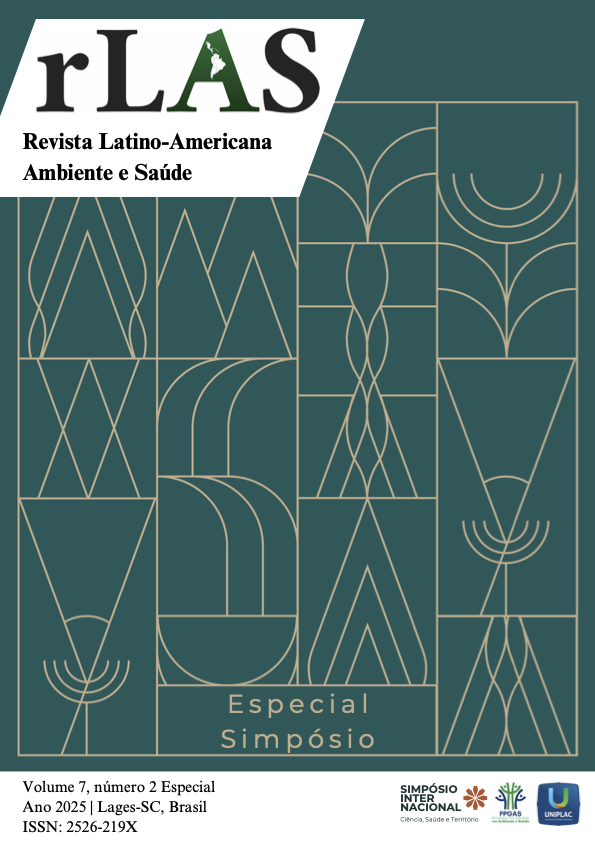Application of sensorimotor stimuli in newborns in the neonatal intensive care unit
Keywords:
Intensive care neonatal, Psychomotor performance, Early interventionAbstract
This study aimed to identify sensorimotor stimulation methods used in newborns admitted to Neonatal Intensive Care Units (NICUs), considering their vulnerability to developmental complications. It is a narrative literature review with a qualitative approach. Findings reveal that early sensorimotor interventions offer significant benefits, including improved responses to pain and stress, and an average reduction of 7.3 days in hospital stay. Appropriate sensory stimulation is essential, as the NICU environment exposes newborns to stimuli that differ from those experienced in the womb, potentially impairing neurological development. Functional neuroimaging studies have shown positive brain changes in infants who received adequate stimulation. Among the most effective strategies is the Kangaroo Method, which promotes affective bonding, physiological stability, and neurological development. The successful implementation of such interventions requires integrated multiprofessional efforts, with structured and individualized protocols. Furthermore, active family involvement is fundamental to enhancing the positive effects of early stimulation.
References
ALTIMIER, L.; PHILLIPS, R. The Neonatal Integrative Developmental Care Model: Advanced Clinical Applications of the Seven Core Measures for Neuroprotective Family-centered Developmental Care. Newborn and Infant Nursing Reviews, [s. l.], v. 16, n. 4, p. 230–244, 2016.
ARAÚJO, A.; EICKMANN, S.; COUTINHO, S. Fatores associados ao atraso do desenvolvimento motor de crianças prematuras internadas em unidade de neonatologia. Revista Brasileira de Saúde Materno Infantil, [s. l.], v. 13, n. 2, p. 119–128, 2013.
BATISTA, G. et al. Unidade de terapia intensiva neonatal (utin): A importância na sobrevida dos recém-nascidos. Research, Society and Development, [s. l.], v. 10, n. 6, p. e40910615884, 2021.
BELTRÁN, M. I. et al. Sensory-based interventions in the NICU: systematic review of effects on preterm brain development. Pediatric Research, [s. l.], v. 92, n. 1, p. 47–60, 2022.
DA SILVEIRA, K. et al. Principais Causas de Internamento na UTI Neonatal: Uma pesquisa em um hospital do oeste do paraná. Acta Elit Salutis, [s. l.], v. 7, n. 1, 2022.
DOS SANTOS, A. C. S. et al. Breastfeeding at discharge and in the third stage of the Kangaroo Mother Care among hospitalized preterm infants. Revista da Escola de Enfermagem da USP, [s. l.], v. 58, p. e20230383, 2024.
GONÇALVES, M. C. Prematuridade: desenvolvimento neurológico e motor avaliação e tratamento. Thieme Revinter, 2012.
GRAVEN, S. N.; BROWNE, J. V. Sensory development in the fetus, neonate, and infant: introduction and overview. Newborn and Infant Nursing Reviews, [s. l.], v. 8, n. 4, p. 169–172, 2008.
JANVIER, A.; LANTOS, J. Delivery room practices for extremely preterm infants: the harms of the gestational age label. Archives of Disease in Childhood - Fetal and Neonatal Edition, [s. l.], v. 101, n. 5, p. F375–F376, 2016.
JOHNSTON, C. et al. First Brazilian recommendation on physiotherapy with sensory motor stimulation in newborns and infants in the intensive care unit. Critical Care Science, [s. l.], v. 33, n. 1, 2021.
KORETI, M.; MUNTODE GHARDE, P. A Narrative review of kangaroo mother care (KMC) and its effects on and benefits for low birth weight (LBW) babies. Cureus, [s. l.], 2022.
MACHADO, A. et al. Processamento sensorial no período da infância em crianças nascidas pré-termo: revisão sistemática. Revista Paulista de Pediatria, [s. l.], v. 35, n. 1, p. 92–101, 2017.
MORAN, C. A. et al. Visual stimulation in the neonatal intensive care unit: A systematic literature review. Journal of Child Health Care, [s. l.], p. 13674935241227344, 2024.
NARCISO, L. M.; BELEZA, L. O.; IMOTO, A. M. The effectiveness of Kangaroo Mother Care in hospitalization period of preterm and low birth weight infants: systematic review and meta-analysis. Jornal de Pediatria, [s. l.], v. 98, n. 2, p. 117–125, 2022.
RODRIGUEZ GONZALEZ, P. et al. Effectiveness of oral sensory-motor stimulation in premature infants in the Neonatal Intensive Care Unit (NICU) Systematic Review. Children, [s. l.], v. 8, n. 9, p. 758, 2021.
ROTHER, Edna Terezinha. Revisão sistemática X revisão narrativa. Acta Paulista de Enfermagem, [s. l.], v. 20, n. 2, p. v–vi, 2007.
SANTOS, M. H.; AZEVEDO FILHO, F. M. Benefícios do método Mãe Canguru em recém-nascidos pré-termo ou baixo peso: uma revisão da literatura - doi: 10.5102/ucs.v14i1.3477. Universitas: Ciências da Saúde, [s. l.], v. 14, n. 1, p. 67–76, 2016.
SPITTLE, A. J. et al. Motor trajectories from birth to 5 years of children born at less than 30 weeks’ gestation: early predictors and functional implications. Protocol for a prospective cohort study. Journal of Physiotherapy, [s. l.], v. 62, n. 4, p. 222–223, 2016.
SPITTLE, A.; TREYVAUD, K. The role of early developmental intervention to influence neurobehavioral outcomes of children born preterm. Seminars in Perinatology, [s. l.], v. 40, n. 8, p. 542–548, 2016.
SWEENEY, J. K.; HERIZA, C. B.; BLANCHARD, Y. Neonatal Physical Therapy. Part I: Clinical Competencies and Neonatal Intensive Care Unit Clinical Training Models. Pediatric Physical Therapy, [s. l.], v. 21, n. 4, p. 296–307, 2009.
ZIRPOLI, D. B. et al. Benefits of the Kangaroo Method: An Integrative Literature Review. Revista de Pesquisa Cuidado é Fundamental Online, [s. l.], v. 11, n. 2, p. 547–554, 2019.


